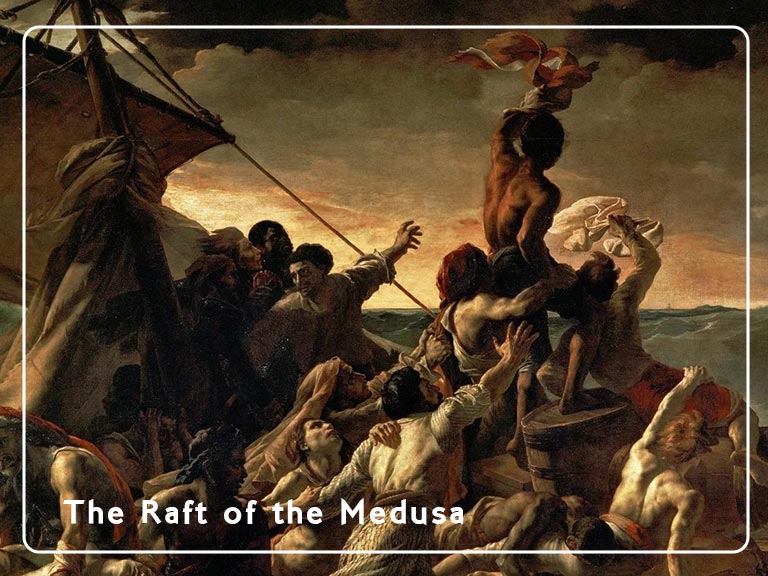The Raft of the Medusa is an oil painting by French Romantic painter Théodore Géricault, completed in 1819. The painting depicts the aftermath of a shipwreck in which the survivors of the shipwreck were forced to endure extreme hardships and suffering on a makeshift raft.
The painting is based on a true event, the wreck of the French frigate Méduse, which ran aground off the coast of Africa in 1816. The captain of the ship and many of the crew abandoned the passengers and took the lifeboats for themselves, leaving the remaining passengers to fend for themselves on a raft. Only 15 of the 147 passengers on the raft survived the ordeal.
The painting is monumental in size, measuring approximately 16 feet by 23 feet, and is housed at the Louvre Museum in Paris. It is considered a masterpiece of French Romanticism and is renowned for its dramatic and emotional portrayal of human suffering and survival.
In the painting, Géricault depicts the survivors of the wreck as desperate and exhausted, with some fighting for their lives and others succumbing to despair. The painting’s composition is complex and dynamic, with bodies intermingling and overlapping in a chaotic scene of struggle and survival.
One of the most striking aspects of the painting is its use of light and shadow. Géricault uses strong contrasts between light and dark to create a sense of drama and intensity, with the faces and bodies of the survivors illuminated in stark relief against the dark background.

Théodore Géricault completed the painting after conducting extensive research into the shipwreck and its survivors. He studied corpses, interviewed survivors, and even built a life-sized model of the raft to ensure the accuracy of his depiction.
Géricault approached the painting as a monumental historical drama, using a composition that emphasized the dramatic struggle for survival on the raft. He used a color palette that was muted and somber, with strong contrasts between light and shadow to heighten the emotional impact of the scene.
To create a sense of realism and accuracy, Géricault used a variety of techniques, including layering and glazing to achieve depth and luminosity in the painting. He also used a technique known as “sfumato,” which involves blending colors together to create a soft, hazy effect. This technique is evident in the misty horizon and the subtle blending of colors in the skin tones of the survivors.
One notable aspect of the painting is its sense of movement and chaos. Géricault used diagonal lines and dynamic poses to create a sense of motion and urgency, with bodies intermingling and overlapping in a chaotic scene of struggle and survival. He also used chiaroscuro, or the contrast between light and shadow, to create depth and drama in the painting.
Overall, Géricault’s approach to painting The Raft of the Medusa was highly intentional and meticulous. He was determined to create a powerful and emotionally charged depiction of the shipwreck and its survivors, and he succeeded in creating a masterpiece that continues to captivate viewers to this day.
If you would like to receive a roundup of all of our blog posts once a week to keep you inspired in your inbox, why not sign up to our newsletter. You can access our sign up at the top of our page. If you are a London Art College student and you would like your artwork featured here, drop us a line at any time.

